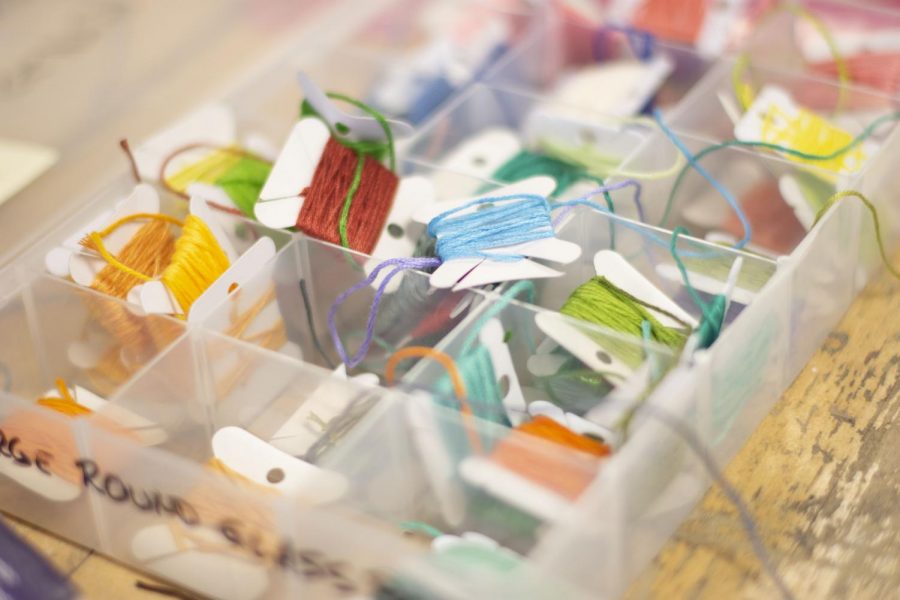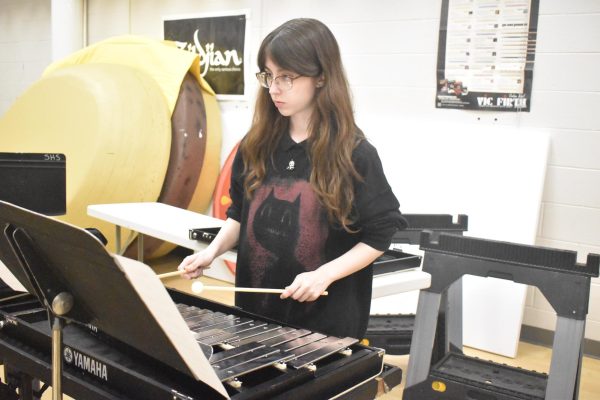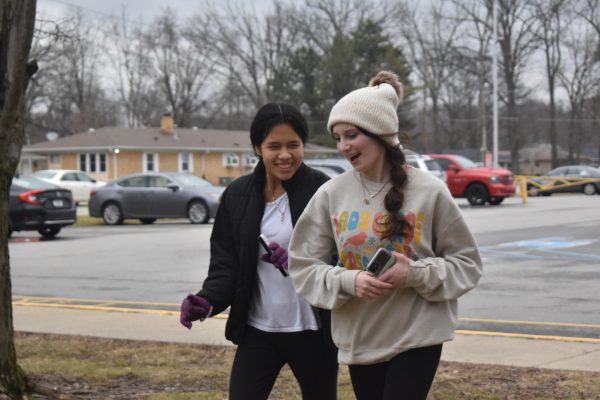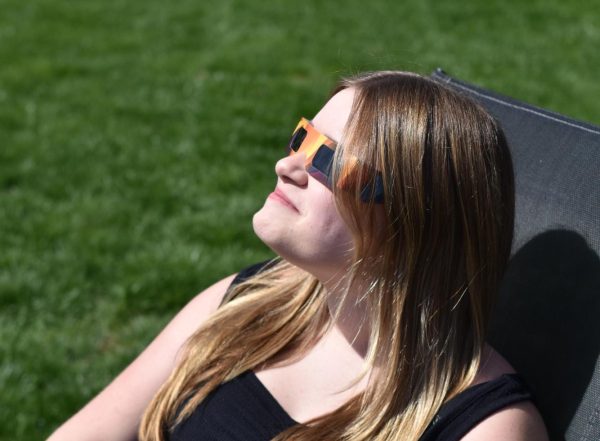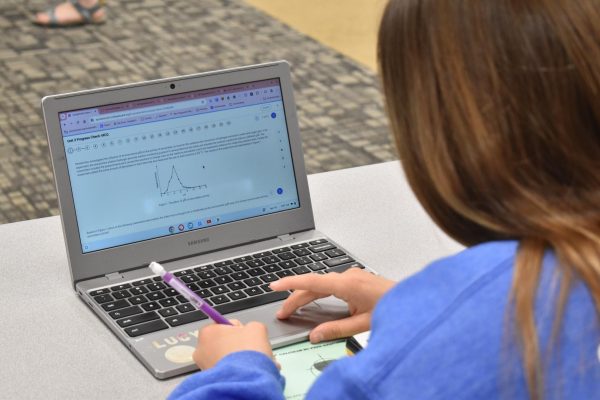Feeling in color
Shouse’s class makes bracelets using their emotions represented by color
Students in Kayla Shouse’s art class are making bracelets using the colors of the strings to represent their emotions.
Senior Rachel Dean spent the last few weeks making friendship bracelets that best represent her. She chose to make her bracelets out of pastel blue, pink and green to reflect her light and bubbly personality.
Dean is not alone in this bracelet-making process. Students in art teacher Kayla Shouse’s jewelry-making classes and in art teacher Mariette Fleck’s textile class are currently making bracelets that deal with color psychology.
“Color psychology is the feelings and emotions that are tied behind each color,” Shouse said.
The classes’ assignments are to make four bracelets using soft embroidery thread and utilizing different color schemes and knot patterns. The different colors in their schemes are supposed to represent the students’ personalities and emotions.
Since being given the assignment, students go into class every day, get the general announcements and then just have the class period to work on their bracelets. During this time, they are able to further their bracelet-making skills and ask any questions they have.
To get the students going, Shouse posed the question of “when you think of red, what do you think of?” She says that obviously people have different feelings and reactions to colors because of how they’ve been influenced in their lives, so she just went over the generalized feelings that colors can give.
Psychology teacher Daniel Jones says there is enough research that proves there is something to color psychology, but the results are inconclusive.
“The basic idea between believers of color psychology and its effects (is that) colors can influence our emotions and our behavior,” Jones said.
Although Jones is not doubtful of color psychology, he says the biggest question in psychology is how much nature makes up a person versus how much nurture makes up a person. Do people react to colors in particular ways because of different influences in their lives or because of simple biology?
This is where the inconclusivity stems from and why Jones says that students picking their own bracelet color is definitely at least partially a result of their nurture but could also come from their biological makeup. For example, Jones says a girl could be more apt to pick pink because of their genetic makeup because they have XX chromosomes instead of XY.
“We will never know the percentage of nature and nurture. That is impossible,” Jones said.
According to Gregory Ciotti on the psychology of color, research shows that 90 percent of snap judgments made on products can be based off of color alone. This means nine out of 10 times, people form an immediate opinion on an item or idea, solely because the color presented to them is attractive to them.
Jones says the only way to have conclusive results for color psychology is to experiment. However, he says experimenting is impossible because real life does not work like an experiment. At any given second, the human body can experience up to 10,000 bits of sensory stimuli, but only about 40 of those can be consciously attended to at a time. This is ultimately why the psychology of color can’t be determined. There is no way to tell what 40 stimuli were affecting the students when they picked out a color and had that initial snap judgment.
The effect of wearing bracelets that include colors that represent a student is unknown, according to Jones. Snap judgments could play into the effect, as well as sensory stimuli.
“We just know that there is an effect,” Jones said.

Hey, y’all. It’s Elizabeth Valadez, and this year I’m back for my third and final year as The Journal’s Editor-In-Chief. I also play the clarinet,...


